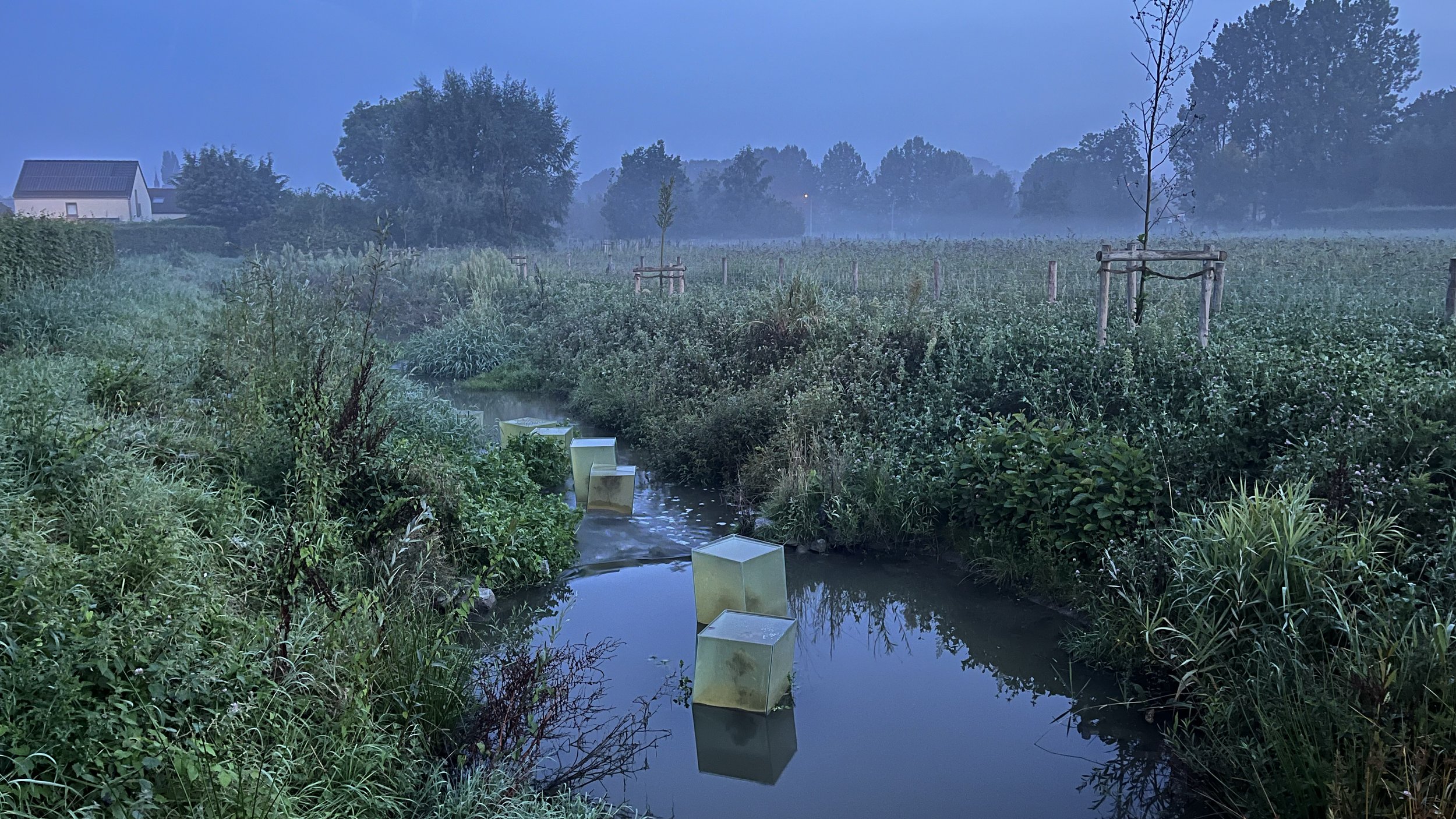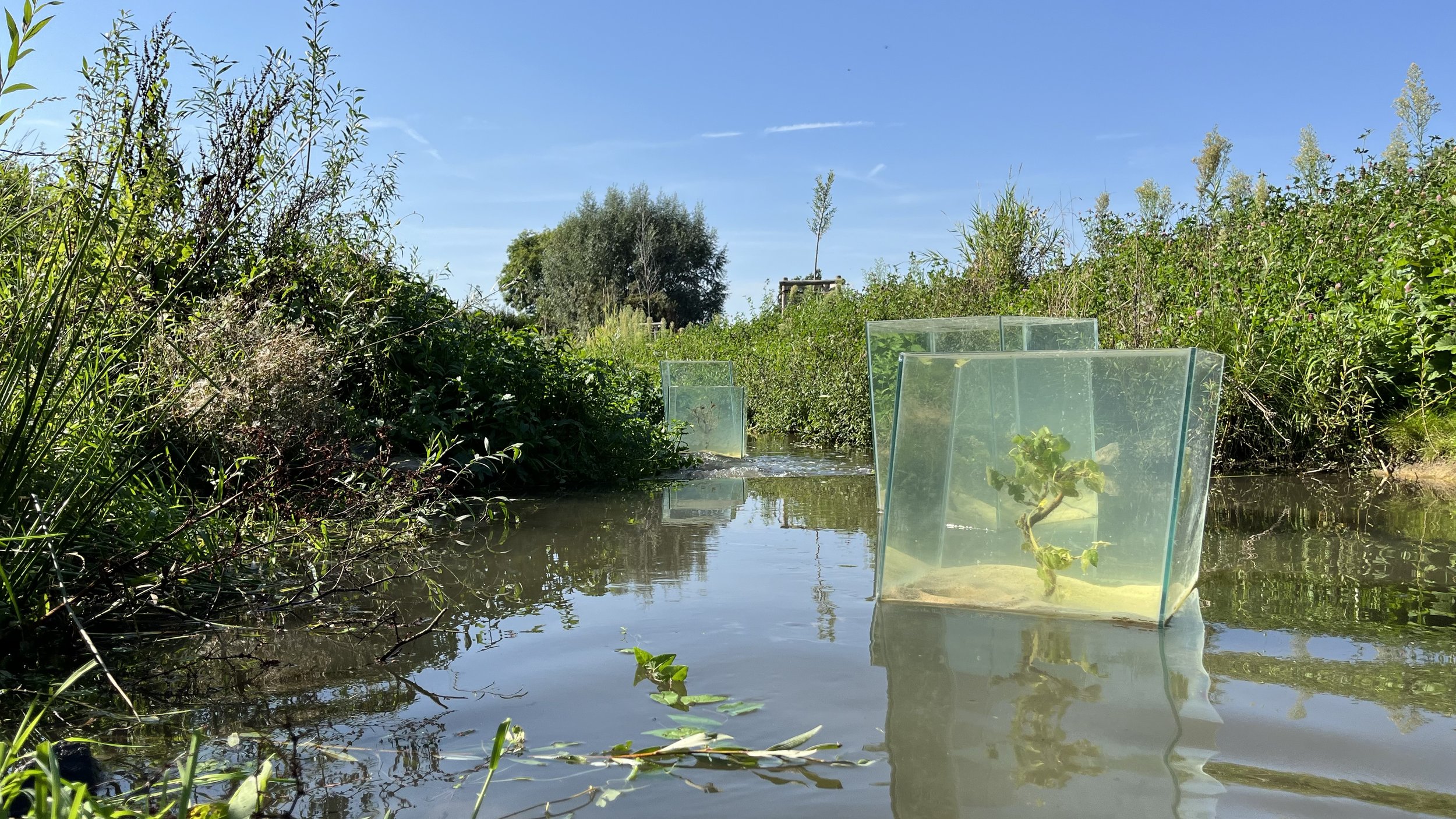r/ Kunst & Zwalm, Munkzwalm, 2023.
Kunst & Zwalm is a biennial art route in the Zwalm region organised by BOEM vzw since 1997. The project invites artists to work closely with the environment and to imagine a new landscape. For this edition, Loes Jacobs/nadine and Chris Rotsaert/manoeuvretake on the joint curatorship. Together with 18 artists/collectives, they set to work around ‘water’. The reality of the Zwalm river crossing the landscape but also the power and mystics of water, and its social debate, became the guiding principle for unique artistic trajectories.
i/ Entre-Lacs, Villeneuve d’asch, 2022.
Entre-Lacs took place from Monday, May 30th till Sunday, July 2nd 2022 in the chain of lakes in Villeneuve d’Ascq.
For one week – from May 30th till June 3rd , 8 artists (or teams) were invited to create a work of art integrated in a trajectory.
During a trip to southern Europe, Various Artists was confronted with scenes of landscapes completely transformed by the construction of hydroelectric dams. These large-scale projects, subsidised by the European Communities, are a means of producing energy and securing water supplies for industrial agriculture at the expense of the original flora, fauna and culture of an ancient landscape. "Drowning Bonsai recreates the image of drowned olive groves and confronts us with the extreme impact that agriculture can have on nature. Dams are being built all over the world, leading to natural, political and social tensions at different levels - local, national, global. Large-scale pumping of groundwater for urban development and misplaced monocultures in agriculture are leading to dramatic groundwater depletion, resulting in landslides and droughts. Addressing this core issue is key to addressing other challenges because of the link between water and global warming, energy shortages, food supply pressures, population pressures, pollution, environmental degradation, global epidemics and natural disasters.
The art of bonsai dates back many centuries and is a deeply symbolic and sacred practice, whose integral elements of simplicity, harmony and balance are also reflected in many aspects of Japanese culture and lifestyle. The art of bonsai, which has been part of the culture for 2,000 years, was inspired by the Chinese art of Penjing, which was brought to Japan from China, and then shaped and influenced by minimalist Buddhist culture.Unlike natural processes, every element of a bonsai tree, down to the smallest detail, is deliberately orchestrated and combined to create a story and to contribute to the aesthetics, deeper meanings and symbolism of each tree. Each bonsai tree is created with the aim of evoking an emotion in the observer, and it is generally assumed that bonsai trees bring happiness and harmony, but one could also see the bonsai tree as a symbol of the way we perceive and treat nature. Since man invented agriculture 10,000 years ago, resulting in the domestication of plants and animals. We see nature as an environment that can and must be dominated. Our failure to include nature in our profit-driven culture has resulted in an enormous loss of diversity. Thousands of years of injustice to non-human life seem to be reaching a turning point, at least in artistic terms.




















